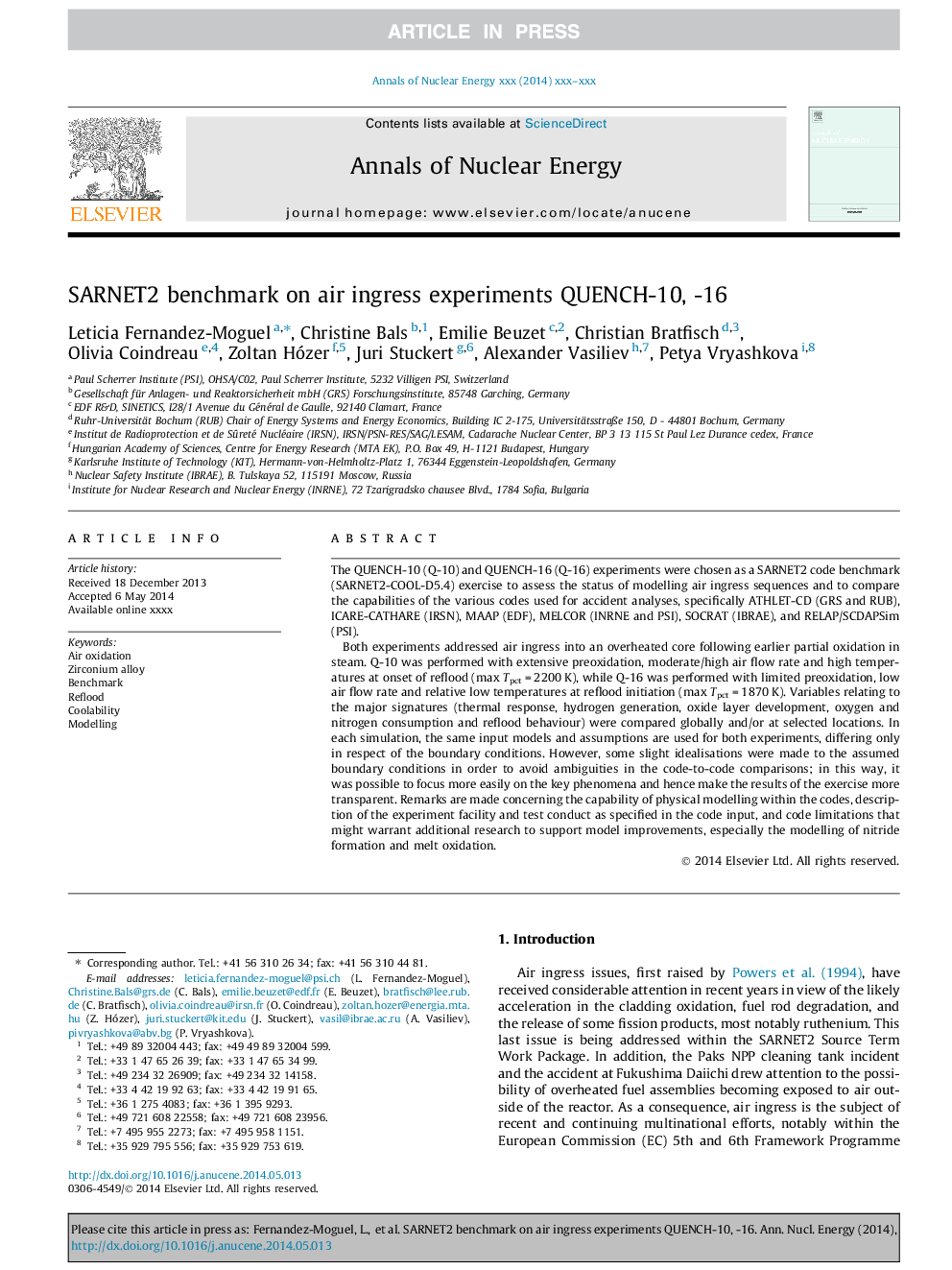| Article ID | Journal | Published Year | Pages | File Type |
|---|---|---|---|---|
| 8068938 | Annals of Nuclear Energy | 2014 | 12 Pages |
Abstract
Both experiments addressed air ingress into an overheated core following earlier partial oxidation in steam. Q-10 was performed with extensive preoxidation, moderate/high air flow rate and high temperatures at onset of reflood (max Tpct = 2200 K), while Q-16 was performed with limited preoxidation, low air flow rate and relative low temperatures at reflood initiation (max Tpct = 1870 K). Variables relating to the major signatures (thermal response, hydrogen generation, oxide layer development, oxygen and nitrogen consumption and reflood behaviour) were compared globally and/or at selected locations. In each simulation, the same input models and assumptions are used for both experiments, differing only in respect of the boundary conditions. However, some slight idealisations were made to the assumed boundary conditions in order to avoid ambiguities in the code-to-code comparisons; in this way, it was possible to focus more easily on the key phenomena and hence make the results of the exercise more transparent. Remarks are made concerning the capability of physical modelling within the codes, description of the experiment facility and test conduct as specified in the code input, and code limitations that might warrant additional research to support model improvements, especially the modelling of nitride formation and melt oxidation.
Related Topics
Physical Sciences and Engineering
Energy
Energy Engineering and Power Technology
Authors
Leticia Fernandez-Moguel, Christine Bals, Emilie Beuzet, Christian Bratfisch, Olivia Coindreau, Zoltan Hózer, Juri Stuckert, Alexander Vasiliev, Petya Vryashkova,
